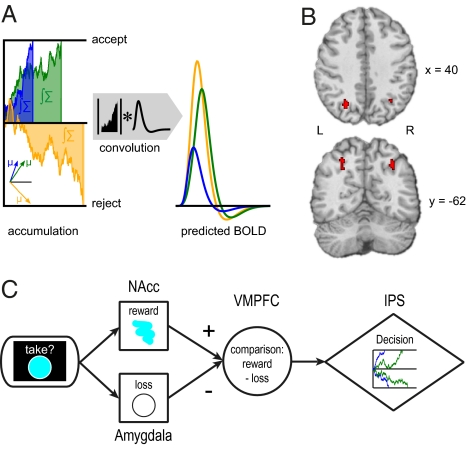Fig. 4.
Brain activation results for accumulation of the cost–benefit difference. (A) The diffusion model predicts greater BOLD signal in accumulator regions for harder decisions. (Left) Drift processes with a high (blue), medium (green), or low (yellow) drift rate μ. Lower drift rates signify harder decisions (within participants) or less efficient decision making (between participants). Because low-drift-rate decisions last longer, the area under the drift process (∫Σ) will also be greater for lower drift rates. Therefore, convolving the drift process with a hemodynamic response function leads to greater predicted BOLD signals for harder trials (Right). Note that accumulator regions should reflect the absolute value of the area under the drift process, as they are indifferent to the sign of the cost–benefit difference. (B) Accumulator regions are functionally coupled to the comparator region (VMPFC), modulated by individual drift rates, and are more strongly activated for more difficult trials as described in A. Accumulator regions in mid-intraparietal sulcus were identified by a conjunction analysis (see Methods for details). (C) Proposed brain mechanism for cost-benefit decision making: Cost and benefit signals from amygdala and nucleus accumbens (NAcc), respectively, are compared in VMPFC. The resulting difference signal is accumulated in intraparietal sulcus (IPS) until a decision threshold is reached.

